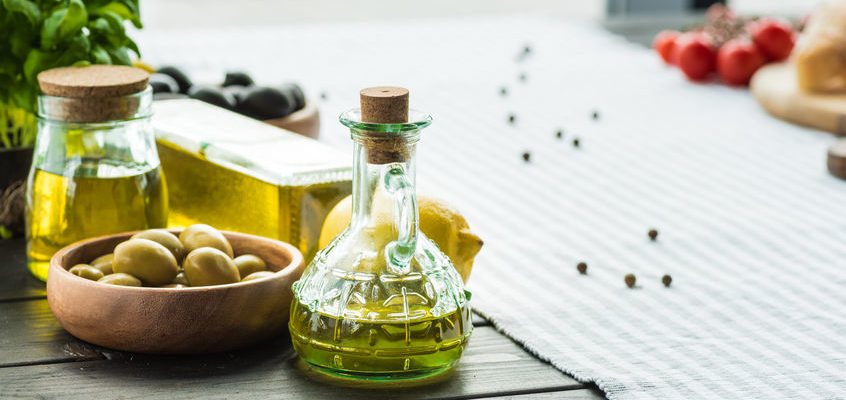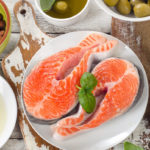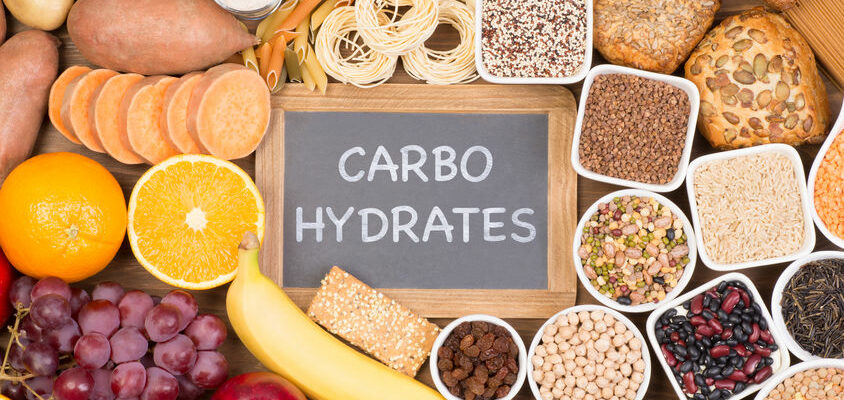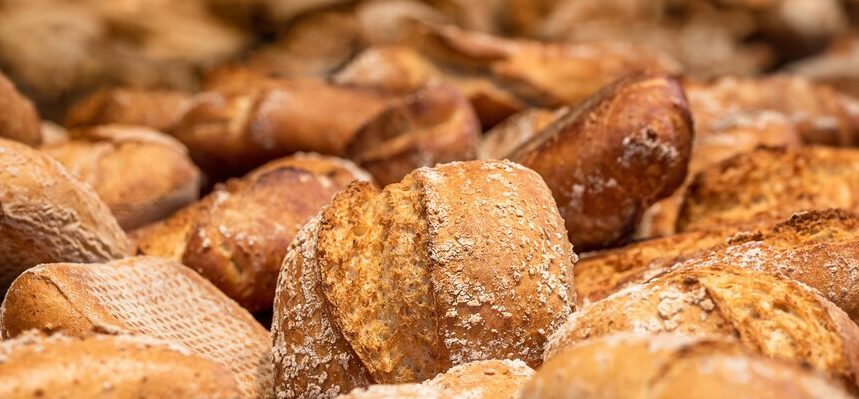
Polyphenols are compounds that occur naturally in plants like fruits and vegetables. Over 8,000 types of polyphenols exist. They are classified into four main groups¹:
- Flavonoids (60% of all polyphenols)
- Phenolic acids (30% of all polyphenols)
- Polyphenolic amides
- Other polyphenols
These micronutrients have gained a reputation for their purported health benefits and availability in foods such as olive oil. A new food trend promising to boost health, polyphenol rich olive oil is flying off supermarket shelves at higher than normal resale prices. However, technically, to qualify as polyphenol rich, olive oils should contain at least 250 milligrams of polyphenols per kilogram. So, yes. There is such a thing as polyphenol rich olive oil.
How does regular olive oil compare?
Standard extra virgin olive oil usually has between 100-250 milligrams of polyphenols per kilogram. According to the European Union, producers can use the health claim that “olive oil polyphenols contribute to the protection of blood lipids from oxidative stress”² only if it possesses a minimum of 5 milligrams of hydroxytyrosol (a polyphenol unique to olive oil) per 20 grams (or 250 mg/kg). This stipulation from the EU’s Regulation 432/2012 sets the standard for many producers, considering that most olive oil is produced overseas in countries like Spain, Italy, and Greece. In 2018, the FDA updated their health food claim to state that “supportive but not conclusive scientific evidence suggests that daily consumption of about 1½ tablespoons (20 grams) of oils containing high levels of oleic acid, may reduce the risk of coronary heart disease.”³
Potential health benefits of polyphenols from olive oil
Scientists have been studying the effect of polyphenols on humans for quite some time. Polyphenols are thought to be one of the most abundant antioxidants in the diet. Research has shown that polyphenols can slow down the development of cardiovascular, neurodegenerative, and cancer diseases⁴. Due to olive oil’s level of antioxidants, it can combat free radicals and reduce oxidative stress⁵ in the body. Other health benefits that olive oil offers are anti-inflammatory, anti-allergenic, anti-thrombotic, anti-atherogenic, and anti-mutagenic effects.
Other foods with polyphenols
As polyphenols are plentiful plant-based micronutrients, it should come as no surprise that there are other rich sources of these compounds. Red wine’s most renowned health benefit of lowering the risk of cardiovascular disease can be directly linked to its polyphenol compounds⁶. Furthermore, both black and green varieties of tea can offer substantial amounts of polyphenols. These compounds in tea have been linked to lowered blood pressure, as well as anti-cancer, anti-aging, neuroprotective, and antiviral effects⁷.
| Food | Levels of Polyphenols |
|---|---|
| Polyphenol Rich Olive Oil | 250 mg/kg |
| Red Wine (less than 6 months of age) | 400 mg/kg⁸ |
| Green Tea | 300 mg/kg⁹ |
| Sorghum (Hongyingzi variety) | 8,920 mg/kg¹⁰ |
| Eggplant (Eskisehir Tombul variety) | 1,388 mg/kg¹¹ |
Notes on polyphenol consumption
Taking advantage of the benefits of polyphenols is tempting for anyone looking to improve their health through their diet. Nonetheless, there are several points to bear in mind with the consumption of these micronutrients. First, as a compound with antioxidant properties, it is crucial to store these polyphenol rich foods properly to avoid oxidation that could render them useless. Additionally, polyphenols possess varying levels of bioavailability, meaning that their intake can be affected by a lack of other compounds in the body and may lead to their eventual excretion. Finally, while concerns about overconsumption of polyphenols are justified, the accumulation of these biologically active compounds in tissues is essential to exert their effects⁷ on the body. In conclusion, while polyphenol rich olive oil can offer health benefits, it is in our best interest not to disregard other foods high in polyphenols.
For more info, check our Youtube!
References
- Tsao, Rong. “Chemistry and Biochemistry of Dietary Polyphenols.” Nutrients, MDPI, Dec. 2010, www.ncbi.nlm.nih.gov/pmc/articles/PMC3257627/.
- Commission Regulation (EU) No 432/2012. Official Journal of the European Union, 16 May 2012, eur-lex.europa.eu/LexUriServ/LexUriServ.do?uri=OJ:L:2012:136:0001:0040:EN:PDF.
- “FDA Completes Review of Qualified Health Claim Petition for Oleic Acid.” U.S. Food and Drug Administration, FDA, 19 Nov. 2018, www.fda.gov/food/cfsan-constituent-updates/fda-completes-review-qualified-health-claim-petition-oleic-acid-and-risk-coronary-heart-disease.
- Gorzynik-Debicka, Monika, et al. “Potential Health Benefits of Olive Oil and Plant Polyphenols.” International Journal of Molecular Sciences, MDPI, 28 Feb. 2018, www.ncbi.nlm.nih.gov/pmc/articles/PMC5877547/.
- Pham-Huy, Lien Ai, et al. “Free Radicals, Antioxidants in Disease and Health.” International Journal of Biomedical Science : IJBS, Master Publishing Group, June 2008, www.ncbi.nlm.nih.gov/pmc/articles/PMC3614697/.
- Dell’Agli, Mario, et al. “Vascular Effects of Wine Polyphenols.” OUP Academic, Oxford University Press, 1 Sept. 2004, academic.oup.com/cardiovascres/article/63/4/593/318588.
- Pandey, Kanti Bhooshan, and Syed Ibrahim Rizvi. “Plant Polyphenols as Dietary Antioxidants in Human Health and Disease.” Oxidative Medicine and Cellular Longevity, Landes Bioscience, 2009, www.ncbi.nlm.nih.gov/pmc/articles/PMC2835915/.
- Dell’Agli, Mario, et al. “Vascular Effects of Wine Polyphenols.” OUP Academic, Oxford University Press, 1 Sept. 2004, academic.oup.com/cardiovascres/article/63/4/593/318588.
- Ponmurugan, Ponnusamy, et al. “Tea Polyphenols Chemistry for Pharmaceutical Applications.” IntechOpen, IntechOpen, 3 June 2019, www.intechopen.com/books/tea-chemistry-and-pharmacology/tea-polyphenols-chemistry-for-pharmaceutical-applications.
- Shen, Shuyu, et al. “Phenolic Compositions and Antioxidant Activities Differ Significantly among Sorghum Grains with Different Applications.” Molecules (Basel, Switzerland), MDPI, 17 May 2018, www.ncbi.nlm.nih.gov/pmc/articles/PMC6100422/#sec2dot1-molecules-23-01203.
- Bilal Okmen , Hasan O. Sigva , Sevgi Mutlu , Sami Doganlar , Ahmet Yemenicioglu & Anne Frary (2009) Total Antioxidant Activity and Total Phenolic Contents in Different Turkish Eggplant (Solanum Melongena L.) Cultivars, International Journal of Food Properties, 12:3, 616-624, https://doi.org/10.1080/10942910801992942
Ashuni Pérez is a writer in the culinary, as well as health and wellness industries. With a background in teaching and digital media, she loves to learn and help others discover more about their food, where it comes from, and how best to prepare it. A foodie through and through, she is always searching for new recipes and the freshest ingredients.











Leave A Comment